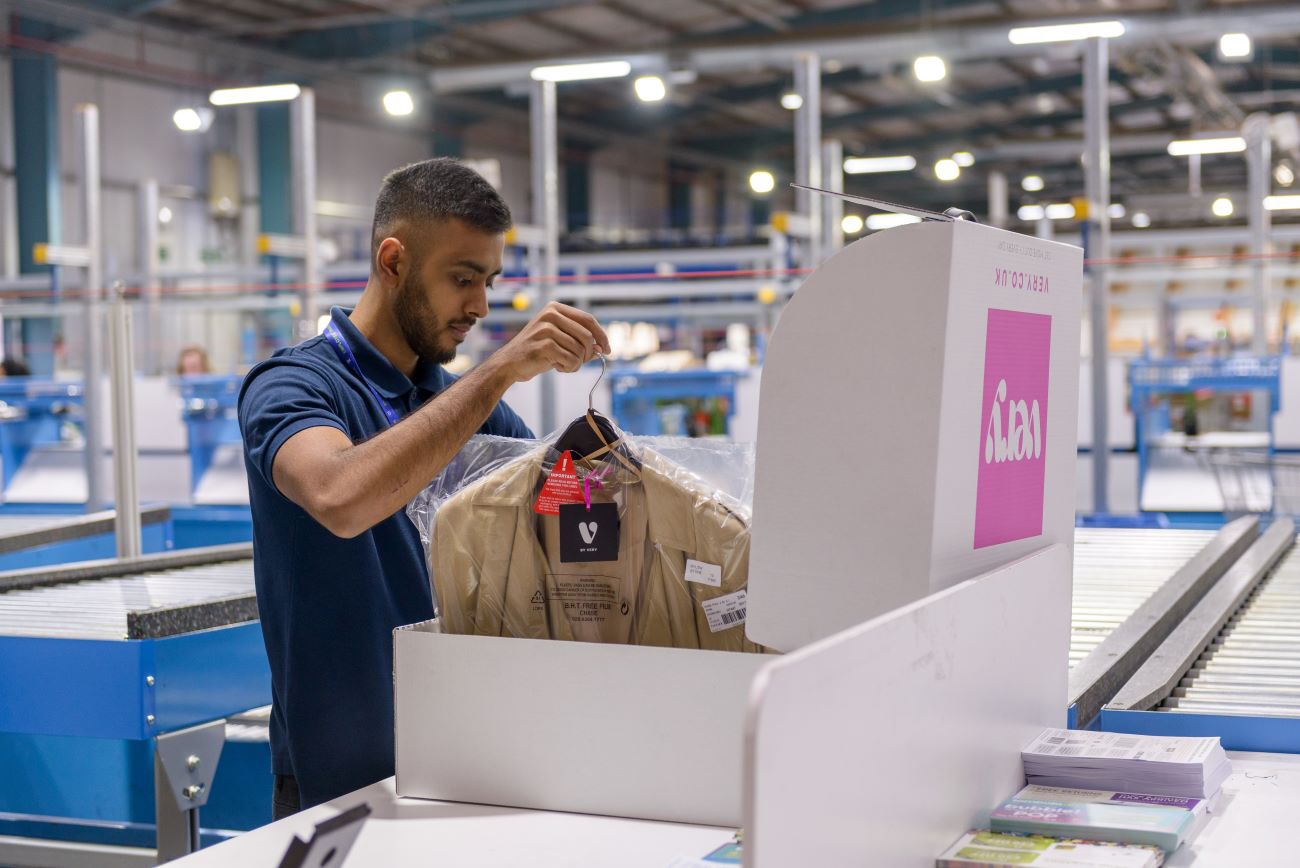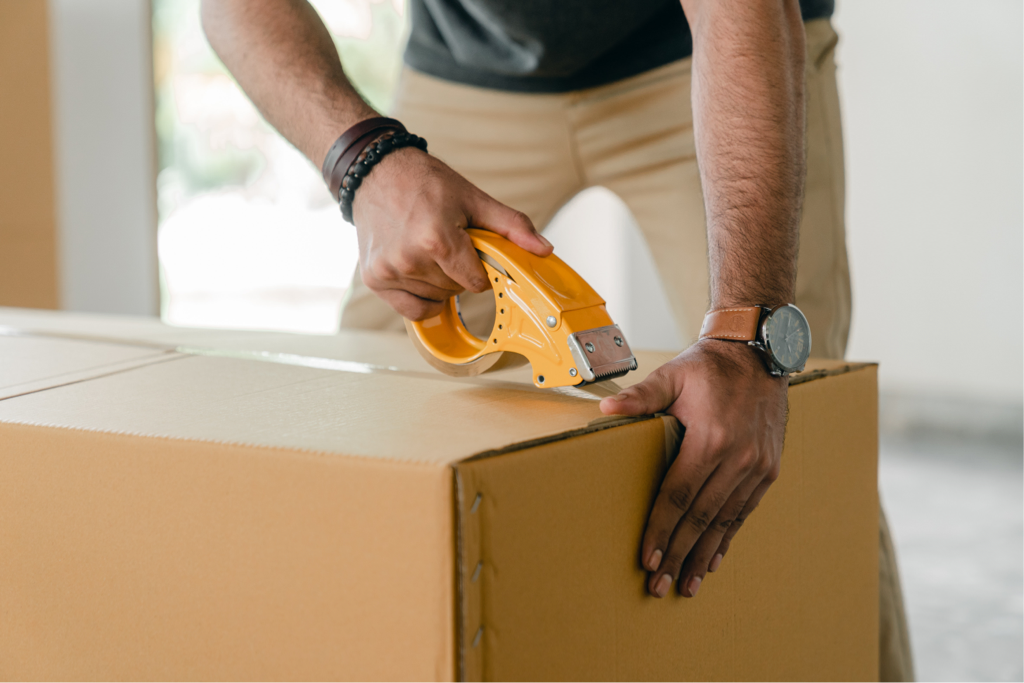How to Optimise your Pick and Pack Fulfilment Process

Estimated reading time: 5 minutes
Any reader who operates a business will know that you’re always looking at any opportunities to streamline processes and improve efficiency and service levels. The ecommerce industry is no exception: it can be a logistically complex machine with multiple moving parts, all of which you’ll want to optimise both individually and end to end.
One critical area is of course your fulfilment processes. If you want your process to be efficient, streamlined and above all effective, then you need to ensure that you’re using the right pick and pack strategy for your business. This article will explain what pick and pack is, helping you to decide which strategy is most effective for you. Additionally, we’ll discuss some key tips on how to optimise this process, and whether you may want to consider using a partner to help.
Pick & Pack Fulfilment – What Is It?
Although it is pretty self-explanatory, for those unaware it is the first stage within the overall fulfilment process. Following the receipt and confirmation of an order, the items ordered by your customers are then picked and packed by a warehouse team. Simple enough, right?
Although it may sound simple, picking and packing orders is more complex than most people realise. If not done correctly, it can be inefficient (adding costs), lead to inaccuracies, order delays or even the delivery of damaged goods amongst other issues. Therefore, it’s important to get this right: you need to be efficient, effective and accurate.
Pick Strategies
Whilst the overall process sounds straightforward, there are a number of different pick and pack strategies to choose from. The effectiveness of each will depend on your type of business, its size, and your industry. Here are some of the most common strategies:
Single Item Picking
This is perhaps the most basic method. This strategy involves members of your warehouse team selecting items to pick one at a time, for individual customer orders, often as the orders come through. This method is more suited to smaller ecommerce operations that tend to have a lower daily volume of orders. It may also be a useful strategy if you sell larger items on a more individual basis.
Batch Picking
Contrary to single item picking, batch picking involves your fulfilment team handling multiple orders at the same time. The picker will essentially work their way around the warehouse, building up items for multiple orders along the way.
This can help with efficiency, as your warehouse staff will not continually be retracing their steps. Batch picking is ideal for warehouses dealing with a larger number of orders, with a smaller number of products in each.
When batch picking you ideally want your ‘pickers’ to start at one end of the warehouse and ‘snake’ through the aisles in a single journey picking as they go, and never having to retrace their steps. For multi-item orders these won’t necessarily be picked all at once as this will impact pick efficiency. These orders may need consolidating at the pack stage.
It’s worth noting that the batch picking process can get more complicated to manage if stock of the same item is kept in multiple locations.
Although an effective strategy to improve efficiency and reduce bottlenecks, it can require more in-depth and complex warehouse setup and data analysis to fully optimise and it’s therefore more suited to larger ecommerce operations.
Zone Picking
As stated in the name, zone picking is a method which involves your warehouse being split into different zones. Members of your fulfilment team will be assigned to specific zones and will handle all orders from their section of the warehouse.
Team members will only collect items for orders that are from their assigned zone. If an order requires an item from another zone, then the team member will pass on the order to another picker in the relevant area.
Zone picking is best utilised for larger operations in warehouses which receive many orders with a high-volume number of items. The efficiency of this strategy can be greatly scaled with the help of conveyor belts.
3 Tips for Optimisation
Warehouse Layout
One of the ways to optimise your pick and pack process is to design your warehouse with efficiency in mind. One example would be placing your best-selling products closer to the packing stations. This will reduce travel time to and from the shelves.
You can also store items that are frequently purchased together in nearby zones, making it easier to pick them. You may even consider the height at which some items are stored, reducing time spent reaching up or down to pick them.
Extra time spent planning and setting up your warehouse will always pay back in the longer term. Always make sure that all of your locations are clearly marked and with a flexible but logical labelling convention.
Bar Coding
Traditional, more manual systems for keeping records such as pen, and paper are slow and more susceptible to human error. If you’re not already, consider using barcoding to maintain accurate product inventory. Scanning barcodes offers an almost error-free method of inputting important stock data quickly onto your system, and significantly reduces pick errors.
If for good reasons you can’t utilise bar codes and are reliant on reading labels and model numbers to either pick or put away, it’s worth making sure that very similar looking items aren’t stored on the same shelf. This is a simple way to reduce costly ‘mis-picks’.
Use Handheld Inventory Scanners or Voice Pick
Another way to increase productivity with your order fulfilment is using technology such as handheld inventory scanners, or voice pick systems. With hard copy pick tickets or pick lists, there is more opportunity for human error – it’s also a very time-consuming process that can cause unnecessary waste .
These systems do come at a cost, but reduce both picking time and labour costs, as well helping to reduce errors and allowing you to measure and understand productivity.
Picking Frequency
Whether batch picking or zone picking you’ll also need to decide on the frequency of ‘running a picking batch’. You’ll know your business best, but make sure you leave plenty of time on the final pick of the day to pack and prepare goods for your courier collections or other outbound transport.
In practice it’s often worth scheduling a smaller ‘final’ pick just before the collection time to ensure you get as many parcels out the door as possible each day.
If you advertise an ‘order by XXXX for same day dispatch’ message make sure you can hit this metric. At busier times don’t forget to consider pulling forward the advertised cut off.
Pack Process
How you manage your pack process is also very important and can save significant time and money if optimised. Make sure you have adequate, well located pack stations and that your pack stations are fit for purpose. Is there:-
- Sufficient space for your team to pack easily without damaging goods
- Space for a good supply of all your frequent use consumables
- Easy access to scanners, terminals and label printers.
- Safe space for a trolley or cage of goods pending packing
- Easy access to the area where packed goods are then stored pending collection
Standing back and reviewing how your team actually works and then making small tweaks can often make a big difference.
Packaging
Make sure your packaging is fit for purpose and not over spec or under spec. This is a big area of cost, so shop around and get the right solution fit for your merchandise and customer base.
Also make sure you have a process in place for ordering all consumables in plenty of time. Don’t get caught short and have to order more expensive short term supplies.
Partner with Warehow
In conclusion there are many things you can do to optimise your pick and pack fulfilment process. If you are a smaller ecommerce business, then you will likely need to use more basic systems, but even small businesses can optimise your warehouse layout with some careful planning.
Beyond this, you should always ensure your team is well trained and understand exactly what is expected and required, and don’t ever forget keeping the warehouse clean and organised is a basic necessity.
Alternatively, if this is all giving you headaches and you’d really rather focus on products and sales have you ever considered a 3PL partner? No matter the size of your business, we can cut out all of this hassle and take care of the heavy lifting for you.
As experts in fulfilment and logistics, Warehow can:
- Integrate directly with 80+ marketplace channels and retailers
- Help expand the scale of your business with low complexity
- Provide an all-inclusive package based on your requirements, whether you need to ship 50 orders a week or 1000+ orders per day
- Use our digital expertise to provide seamless store integration
- Take care of the heavy lifting so that you can focus on what really matters – driving sales and growth!
If you’d like to find out more about how we can support the expansion of your business, get in touch with us at https://www.warehow.com/ to book a free consultation.







